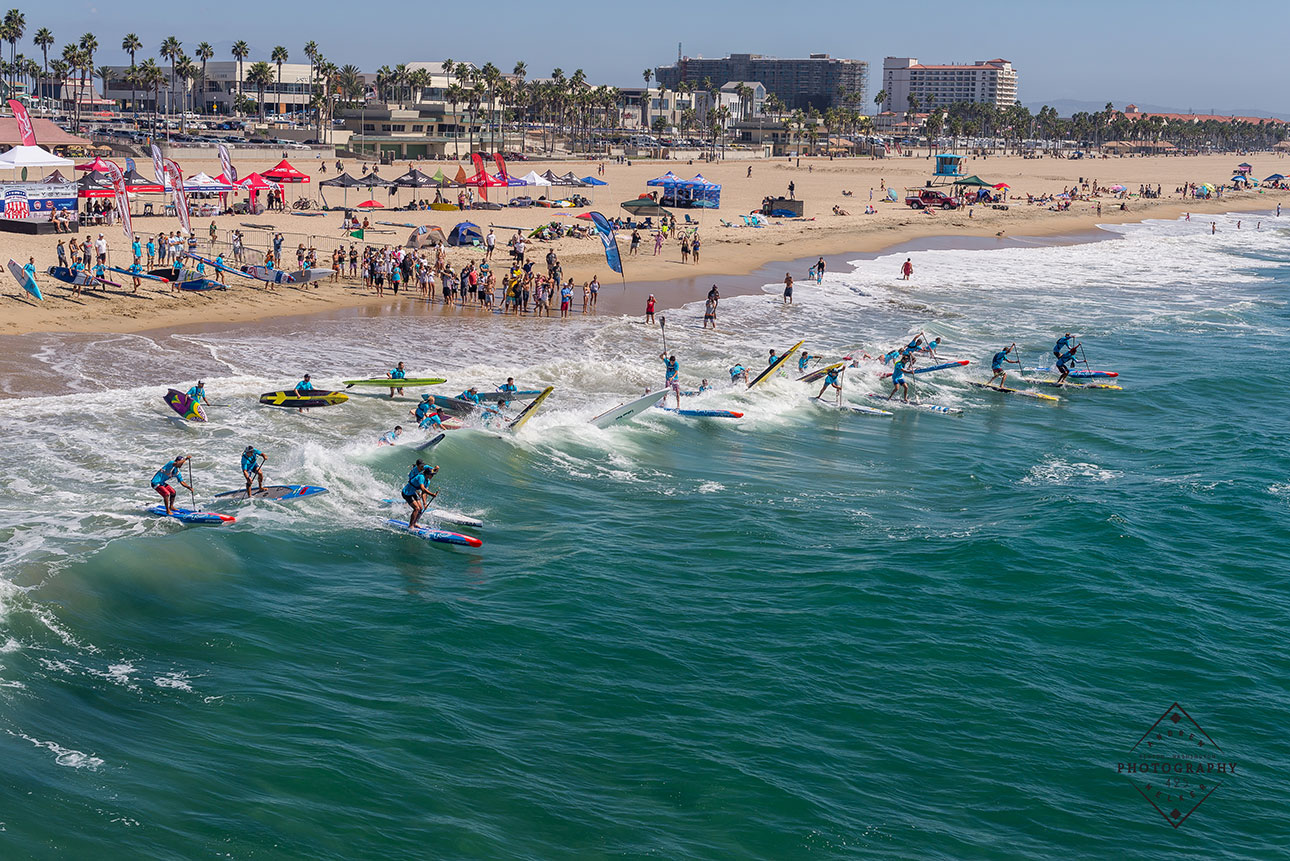
7 Ways to Save the Waterman League’s “Stand Up World Series” (It’s Now or Never…)
UPDATE: Read the most recent article — “The Waterman League Is on the Brink of Going Big or Going Bust”
The Stand Up World Series is a fascinating part of our sport. Almost five years after it began, the Waterman League’s bold vision of a pro tour for the sport’s top athletes has been both a success and a failure, depending on how you look at it. The franchise has attracted outside sponsors and mainstream media, but continually stumbles by not paying the paddlers on time, canceling events and failing to attract many of the top names.
I want to love the World Series. I really do. I’ve given it more positive coverage over the years than most. But as much as I admire their hard work and resilience, following the Waterman League often feels like watching Bill Murray in Groundhog Day, only nobody’s laughing. The Stand Up World Series is equal parts excitement and frustration for the athletes, the fans, the brands and the media.
Building something on the scale of the Stand Up World Series is not easy, and the Waterman League should be applauded for their efforts. My hat truly goes off to them for persevering. But they should also be held accountable for their mistakes, including failure to pay athletes in a timely manner.
The World Series kicked into life way back in November 2011, when half a dozen youngsters hit Fiji’s iconic Namotu Island for an exhibition event. Since then it’s been a wild ride for the Waterman League, with exciting moments tempered by off water dramas. Now, as they prepare for season number five, I wonder if this fledgling company can finally get its act together and do something great for the sport, or if we’re going to be stuck in limbo for another four years. There have indeed been some encouraging signs ahead of the new season, but I worry the necessary changes still won’t be made.
I’ve been critical of the Waterman League in the past (and justifiably so), yet I still want them to succeed. Not only for their good, but for the good of the athletes, the brands and the entire sport in general. So to help out, I sat down and came up with a seven point plan for how to not only save but improve the Stand Up World Series.
This is a long one, but if you care about the World Series and/or the sport in general, I think it’s worth a read.
7 Ways the Waterman League Can Save (and Improve) the ‘Stand Up World Series’
#1. Pay the Athletes Now
#2. Stop Canceling Events
#3. Stop Over-Promising and Under-Delivering
#4. Drop the Distance Races and Focus on the Surf Races
#5. Make it Invite Only
#6. Create a New Style of Race Board (Kai Lenny’s Idea)
#7. Drop the ‘World Title’ Label / Embrace the ‘World Series’ Theme
#1. Pay the Athletes Now
We’re already in 2016 yet many athletes are still owed thousands of dollars prize money from 2015. It’s not right.
Unfortunately, it’s nothing new. The Waterman League starts almost every year owing money from the previous season. Over the years, many of the world’s top paddlers have had to wait months to receive their hard earned prize money (in a couple of extreme cases it was years).
Why?
The Waterman League isn’t trying to cheat the paddlers. They hate being in debt more than anyone, while their sheer determination shows they’re committed to the future. But if you’re running a for-profit company that’s trying to control the professional side of an entire sport, you’ve simply gotta be more responsible with your money.
And that sums up the whole problem: Money. Or lack of it. Since they began, the Waterman League has acted like a Silicon Valley start-up: Burn through the cash in the hope you’ll eventually find a winning formula. I really admire that entrepreneurial spirit, but unfortunately the Waterman League hasn’t had Silicon Valley levels of funding to burn through.
To make it worse, every time this prize money payment saga comes up in public, Waterman League CEO Tristan Boxford actually says how “proud” he is that he “Always pays his debts.” And indeed he does. Eventually. But this isn’t Game of Thrones. You shouldn’t be proud of paying athletes months (or years) late, especially when they’re the ones propping up your business. Yes, you should be proud of having paid out hundreds of thousands of dollars over the years. But before you start boasting about that, focus on paying people on time first.
After the 2015 season wrapped up in October with many paddlers still owed money, the Waterman League promised everyone would “definitely” be paid by early November. Then it was the end of November. Then it was early December. Then it was before Christmas. Then it was early in the new year. Then it was… It just keeps going on and on. I’ve spoken to several of the top World Series athletes in the past month, and I’ve heard the same thing from every single one: “We just want to know when we’re getting paid.”
I appreciate that the Waterman League is trying to do something grander than anything we’ve ever seen in the sport, which can’t be easy. And Tristan agreed with me when I suggested the World Series was perhaps five years ahead of its time. Most great projects are. But either way, it’s been half a decade now; time to drop the start-up mentality and become a serious business. This saga is not just holding back the World Series, it’s holding back the whole professional side of stand up paddle racing.
One top paddler (and long-time World Series athlete) summed it up to me very succinctly:
“It’s like they [the Waterman League] do just enough to keep going but never enough to really succeed, and that seems to keep the whole sport in limbo. They need to either get it together or get out of the way.”
As I wrote in my 2016 season preview, that’s why it’s so encouraging to hear the Waterman League has (apparently) secured a big investment round in recent months. This isn’t a ‘debt round’ like they raised in early 2014 to get themselves out of a hole, this is a major investment that will not only pay off their debts but also give them a serious war chest.
Unfortunately I can’t get a straight answer about whether or not the money is 100% confirmed (I suspect it’s not). But the Waterman League is telling everyone the deal is done, and while they’ve broken plenty of promises in the past, you get the feeling they literally cannot afford to break this one. I don’t even want to think about what’ll happen if this deal falls through, so let’s give the Waterman League one more chance to prove themselves.
Let’s just hope this new investment round comes through asap, so that the Stand Up World Series (and the athletes, brands and media that follow it) can start fresh in season 2016.
#2. Stop Canceling Events
Again, this should be a no-brainer, but unfortunately it happens a lot with the World Series. I often think the Waterman League does the really hard things well (securing non-endemic sponsors, producing quality media) but falls over with the easy stuff (like paying people on time and sticking to dates once you announce them).
These event cancellations go way back to the beginning, when in March 2012 the CamSur Paddle Challenge in the Philippines was canceled just five days before it was supposed to begin, leaving many athletes with useless (and expensive) plane tickets. Later that same year, the Huntington Beach Pro was canceled with only three weeks’ notice.
And every year the same thing happens. Last year we saw three of the Waterman League’s racing events canceled (Dubai, Germany and Brazil), while there were an additional two cancellations on the SUP surfing tour. In fact Dubai and Brazil were somehow canceled twice. Dubai was on, then it was off, then it was on again, then it was off again. Brazil was on, then it was postponed four months, then it was finally canceled altogether just weeks before it was supposed to begin.
(In fairness, the other World Series event that was canceled – the SUP World Cup in Germany – is largely run by a third party, the ACT Agency, not the Waterman League, and that group actually did a good job of informing the community months in advance.)
Unfortunately I see the same thing happening again this year with the Waterman League. The 2016 schedule was “definitely” going to be finalised in November. Two months later and I know of at least three events that are still not confirmed.
It’s not just the World Series that suffers when the Waterman League cancels an event. The whole sport is interconnected, with athletes planning their seasons, sponsors calculating travel budgets, and many other events trying to avoid a clash of dates. Even the ISA gave way last year and avoided the late March/early April time slot because of Dubai and Brazil (which were then canceled). To add to frustrations, Brazil was postponed til mid-August, which clashed with the long-established Gorge Paddle Challenge and initially created headaches for paddlers and brands that wanted to support both.
Enough is enough. The Waterman League needs to treat the rest of the sport with some respect.
I understand that organising international level SUP events is an expensive, tiring and often rather thankless job (I’d certainly never want to do it), and that sometimes third parties don’t follow through on promises or that unforeseen circumstances arise. But stop blaming those third parties and start taking responsibility/showing some leadership. The Waterman League LLC isn’t a local charity, it’s a for-profit company. Time to act like one.
The solution is simple: Don’t announce an event until it’s 100% absolutely positively definitely locked in.
#3. Stop Over-Promising and Under-Delivering
Even for all their stumbles (see above), the Waterman League has done a lot of great things for the sport of stand up paddling. Mainstream media coverage, regular photo/video highlight reels, webcasts, and most important of all: Attracting non-endemic sponsors.
The Stand Up World Series is, at least by one measure, more successful than any other event in the sport. But here’s the rub: The Waterman League continually shoots itself in the foot by over-promising and under-delivering. Instead of being able to proudly list all their achievements, they’re constantly chasing their tail and having to apologise for breaking promises. Even worse, when they do make a mistake, they turn around and promise twice as much to make up for it, which only serves to reinforce the downward spiral.
Every year we hear the same excited tone from the Waterman League crew. Every year is set to be “Dramatic! Exciting! Mind-blowing!” and then every year the same thing happens: Some events get canceled, many paddlers don’t get paid on time and we all shake our heads and say “Well, what else did we expect.”
Groundhog day.
I’ve lost count of how many promises the Waterman League has broken over the years, but they keep doing the same thing: Making promises they know they can’t keep.
For example: Just a few months ago, at a meeting of the World Tour/World Series athletes in Huntington Beach, the Waterman League promised every event in 2016 would have $50,000 prize money. I suspect this was done partly because they were over-excited about the imminent investment round, and partly to make up for the disappointment of having just canceled the remaining two events on the surfing tour.
Some athletes in the room were stoked. “Fifty grand! At every event!” while others simply sighed and shook their heads, knowing it was probably yet another empty promise.
“They really shouldn’t have announced $50,000 per event, that was not a smart move,” was how one influential World Series athlete described it to me.
Instead of over-promising, the Waterman League should have just said “We’ll try hard to increase prize money next year but no promises,” and then waited to see what the finances looked like in February or March. Then, if they did eventually pull off $50k per event (or even anything close to it), they’d be seen as heroes. And if they didn’t, at least no promises were broken. But now they’ve got the athletes expecting $50k per event (and it already sounds like that figure won’t be reached).
For once I’d like to see the Waterman League start the year in subdued fashion. Don’t promise anything big. In fact, they should go out of their to say that it won’t be big. And then when they do get a few successes under their belt, the paddlers will be super stoked because they weren’t expecting it.
This year I want the Waterman League to under-promise and over-deliver.
#4. Drop the Distance Races and Focus on the Surf Races
Points #1, #2 and #3 are pretty obvious, and hopefully they’ll be resolved asap. But now I want to move on and offer a few pieces of unorthodox advice that I think will make the World Series (and the entire sport) far more exciting and successful.
First up: What if they just dropped the distance races and focused on making the World Series into a “surf racing” super tour?
The Waterman League desperately wants to create an exciting format that will appeal to the masses (and that’s something I applaud) but they still haven’t found a winning formula. I was encouraged to hear they’ll separate the distance and sprint events into parallel tours this year, but why not take it one step further?
Just drop the distance races altogether. They’re kinda boring, at least in comparison to the exciting surf races.
A five minute surf race is far more entertaining than a two hour distance race, so if the goal is to create an exciting tour with mainstream appeal, that should be the focus. Plus as a very real bonus, the World Series already has some level of authority in the surf racing events. Nobody will question the legitimacy of a Waterman League surf racing super tour; Tristan and his team should embrace their strengths and just leave the distance racing events to the far more established, more elite and more popular Carolinas, Molokais, Gorges and Lost Mills of the world. The worlds best distance paddlers already have plenty of big events to strive for, the World Series doesn’t need to cater to them.
The World Series has already announced they will crown a “Long Distance World Champion” in 2016. And nobody will believe it’s a legitimate world title because it doesn’t include any of the races I just mentioned. The Waterman League is also planning to crown a “Surf Race World Champion” in 2016, however that will be far more authoritative and legitimate, because outside of the Worlds and the PPGs, there are no big “surf race” events missing from the tour.
So why not just embrace what you’re already good at? Not only does it give the Waterman League instant authority, it’s also far more exciting and entertaining, which means more fans and more sponsorship revenue. It’s win win.
Technically the Waterman League will crown a ‘Sprint Race World Champ’ this year, not a ‘Surf Race World Champ,’ because there will be both flat water and surf racing throughout the season. But I think they should just drop the flat water events altogether and focus on the waves.
As a bonus, if they only had ‘surf racing’ events on the World Series, they could combine every Stand Up World Series event (SUP racing) with the Stand Up World Tour (SUP surfing). These ‘Grand Slam’ events as they call them (i.e. what they already do at Huntington) would reduce the strain of having to organise so many separate events. Six events per year. Every event has a SUP surfing contest and a surf race. It would make things much more simple and affordable for the Waterman League, the athletes and the brands that support it. Best of all: It would make everything more exciting.
I’m the first to admit that SUP racing can often be a little boring, and that our sport needs to find more exciting race formats if it ever wants gain mainstream appeal. So I totally agree with the Waterman League’s vision of an “exciting pro tour.” Unfortunately I don’t see it happening unless they fundamentally change the format of the World Series.
Remember the sprints at Huntington last October? Give us more of that please.
#5. Make the World Series Invite Only
The Stand Up World Series suffers from low participation numbers. I don’t just mean the fact that many of the world’s best paddlers are missing (without Travis, Danny, Titou, Annabel and half a dozen of the world’s other top athletes, the World Series slogan of “World’s Best Paddlers, World’s Best Races” has rung hollow in the past), I mean there’s just not many paddlers on the start line at all.
The very first time I spoke with Tristan Boxford on Skype, back in January 2012, he told me how the inaugural ‘World Series Finals @ Turtle Bay’ (their big season-ending event) would feature the top 200 men and top 100 women. The Waterman League was expecting the top three hundred athletes in the world to attend.
Unfortunately, the first ever World Series Finals attracted just 23 men and 7 women. Instead of 300 athletes there were 30.
This year that was down to just 18 guys and 6 girls at Turtle Bay. The Waterman League’s headline event has actually been shrinking every season. Last October, there were more guys surfing one single wave at the Pacific Paddle Games than there were in the entire event at Turtle Bay. If that’s not symbolic, I don’t know what is.
But here’s the thing, even though the World Series is light on participation, the Waterman League still regularly attracts some of the biggest names in the sport, such as Kai, Connor, Mo, Zane, Jake, Kody, Casper, Arthur, Candice, Fiona, Angie and more.
And here’s the other thing: The Waterman League doesn’t actually need a big turnout to be successful. Look at the WSL pro surfing tour — it’s the top 34 guys and the top 17 women. And that’s one of the greatest spectacles in the ocean. Nobody questions the WSL because they don’t have 300 athletes in every event. In fact, people would start questioning them if they did.
I believe that the Waterman League, which very clearly wants to emulate the WSL, should follow that model and make the Stand Up World Series invite only. Make it an exclusive tour and instantly you turn ‘low participation’ from a weakness into a strength.
The counter argument is that “invite only” may exclude dark horses and rising stars from competing. I agree. That’s why in addition to the “invite only” main event, you also run an open trials race. The Waterman League already uses this exact same format for their SUP surfing events, so why not extend it to the racing? As a bonus, this would actually make the racing events more appealing to athletes, because suddenly it’s so exclusive and special.
#6. Create a New Style of Race Board (Kai Lenny’s Idea)
There’s a very passionate debate raging within the sport right now, and it’s something we really need to resolve: The board class debate.
Almost everyone in the sport agrees it’s pointless having two such similar board classes (12’6 and 14), yet the community can’t even begin to agree on which one to drop. One week there’s a big 12’6 race, next week a big 14′ race. It’s hard on the athletes, the event directors, the brands, the shops. It’s hard on the sport.
So what’s the solution? I believe we simply need to phase out either the 12’6 or the 14. The 14 footer clearly has the momentum, both in terms of amateur and elite race participation numbers around the world, but the 12’6 is stubbornly hanging on. And the biggest hold outs are the ISA Worlds and the World Series.
But if the Stand Up World Series drops the distance races and embraces the far more exciting surf racing element, then it would be easy (and indeed logical) to take it one step further and ditch the 12’6 as well.
I’m not saying they should start racing in the surf on 14 footers. Quite the contrary. I believe the Waterman League should promote a new style of race board that is purpose built for racing in the waves. Introduce a unique length like a 10′ or 10’6, and let the rest of the sport move on and finally embrace one single board class (14′).
The difference in length between 10’6 and 14′ is enough to warrant having both (unlike the confusingly similar 12’6/14). Nobody would want to do a distance race on a 10’6, and most paddlers won’t want to race through waves on their 14 footer. This way the majority of the sport can finally move on and embrace one single board class (14′) while the World Series creates a “Formula 1 style” 10’6 surf racing super series for the uber-elite athletes.
Here’s my basic reasoning:
– Surf races are more exciting, so that’s what the World Series should focus on.
– 12’6 boards don’t belong in the waves any more than 14 footers do (see: Salt Creek, Doheny, Turtle Bay; even some of the world’s best can’t handle it when the waves stand up, no matter whether it’s 12’6 or 14).
– So create a style of race board that does suit racing in the waves, something like 10′ or 10’6 (we’d require some initial testing to find the optimal length, but I suspect it’s around that mark). Racing in the waves isn’t about speed most of the time, it’s mainly about skill and strategy. And in many surf races, particularly when the waves are solid, a 10’6 would actually defeat a 12’6 or 14; you’re not going very fast when you’re not standing on your board.
– There are only a small amount of athletes following the Stand Up World Series to begin with (and that would be confirmed if it went invite-only), so this is only going to impact 30 or 40 paddlers around the world, a tiny fraction of the broader sport. And almost all those athletes get a new custom 12’6 every six months anyway, so why not make their next board a 10’6 and let the rest of the sport move on and embrace a single, harmonious board class.
Yes, plenty of amateurs own 12’6 boards as well, and they don’t want those becoming redundant when the sport embraces the 14 footer. However the amateur race scene is very clearly moving towards 14′ anyway, so it’s seemingly inevitable. Plus, every race board in the world will be redundant eventually (and most within the next year or two) because board design is advancing so quickly, so you’re going to have to upgrade one day if you want to remain competitive.
And like I said, the stats prove that 14′ has the clear momentum at this point: Pacific Paddle Games, Carolina, the Gorge, Lost Mills, Race the Lake, King of the Cut, the Euro Tour — all 14′ for men. It’s already moving that way, so let’s embrace it and finally end this draining debate.
The only asterisk is that most women’s races in the USA are on 12’6 boards, though I daresay most women would prefer to be on a level playing field with the men anyway. Plus, as I wrote recently, top level women’s racing is 80% smaller than men’s, so if we are going to phase out one board, it’s less of a strain on brands to phase out the main women’s board class rather than the men’s.
So the rest of the sport moves on and embraces 14, while the World Series becomes the ‘Formula 1 of SUP’ with an ultra elite 10’6 class. This also gives the World Series an additional unique selling point — they would instantly stand out from every other race.
And if you think 10’6 is too small: Have you ever played around on a board that size? They’re actually a lotta fun. Or just look at the massive surf life saving races in Australia (which are televised nationally, and from which SUP racing could borrow a lot of good ideas), where the stock board class for prone paddling is 10’6. We have a lot of very fit, very strong, very heavy athletes racing in the waves on 10’6 paddleboards. Why not extend that to SUP?
I think a custom 10’6 style board for the World Series would not only solve the board class debate, it would actually make for more exciting racing. Carnage is cool, but when 75% of the field is falling off — see Salt Creek (12’6) or Doheny (14′) — it can sometimes make the sport look silly.
It would also help improve the travel situation. Now I don’t agree with the Waterman League that air travel is a worthy argument in the board class debate (no single airline differentiates between a 12’6 and a 14, while 96% refuse to take either), but if they’re the ones saying it is, then surely they’d want to make life easier on themselves?
And just to make it clear: I’m definitely NOT suggesting we introduce a whole new board class into the sport. We certainly don’t need that. I don’t envision that the Starboards and Naishs of the world would start mass producing these new 10’6 surf race boards. This wouldn’t be a new board class at all, it would be a new style of custom race board for a very limited number of elite athletes. These new 10’6 boards would be custom made and they’d only be used in surf racing events, never on flat water (which would become the undisputed domain of the 14 footer).
Ferrari doesn’t sell its Formula 1 machines, but it does use them as an exciting marketing tool to sell thousands of ‘regular’ sports cars to retail customers. That’s how I see the World Series being used by the brands.
If the World Series doesn’t do this, I predict someone else will, so they might as well take the initiative and gain the first mover’s advantage.
And just to throw a curve ball at the Waterman League: This isn’t even my idea; it’s theirs…
Kai Lenny first suggested using 10’6 race boards during a World Series athlete meeting way back in the early days, and at one point he’d almost convinced Tristan Boxford to run with it. Perhaps it’s time to revisit Kai’s idea…
#7. Drop the ‘World Title’ Label / Embrace the ‘World Series’ Theme
The Waterman League runs two ‘world tours’ — the Stand Up World Tour for SUP surfing and the Stand Up World Series for SUP racing (yes, the names are confusingly similar).
The ‘Stand Up World Tour’ has never really been questioned as the legitimate platform for SUP surfing. Sure, it’s had some stumbles, but there are so few other events that it’s always been viewed as the main show in town.
The ‘Stand Up World Series’ doesn’t have that luxury.
Even if it didn’t stumble, the World Series would have always been hard pressed to establish itself as the legitimate and authoritative world title-crowning tour when events like the Battle of the Paddle (now the Pacific Paddle Games), the Gorge, Carolina, Lost Mills, Molokai, OluKai and half a dozen other big races aren’t included.
If you look at our Race Index leaderboard, which ranks every event in the world based on the level of elite competition, the World Series features well down the order. It’s main strength is attracting the elite athletes, yet even there it loses out to the far more low key events like Carolina and the Gorge.
The Waterman League’s most competitive men’s event, the Huntington Beach Pro, was barely the 5th most competitive race in the world last year. It’s even worse for the women, where the Waterman League’s best event was just the 10th most competitive.
The four biggest non-World Series races scored an average of 62.13% on the men’s Race Index last year. In comparison, the four World Series races averaged only 38.38%. There was an even great disparity on the women’s side, with the non-World Series races scoring almost double — 49.13% to 25.25%.
That disparity is even more compelling when you consider the Race Index actually favours the World Series, because it only focuses on which pro athletes are competing (and the higher their world ranking, the more weighting they contribute), while ignoring elements such as an event’s history, prestige and open race participation.
Based on the SUP Racer World Rankings; 8 of the top 15 guys in the world didn’t compete in a single World Series race last year. On the women’s side it was 9 out of 15. When more than half of the world’s best paddlers are missing, it’s hard to call it the “undisputed world title-crowning tour” as the Waterman League proclaims.
So based on the stats alone, not to mention the general sentiment within the elite paddling community, I think it’s pretty clear the Stand Up World Series is struggling to justify it’s “World Title” label. I think it’s time for the Waterman League to drop it and focus on what they’re really good at.
There’s nothing wrong with ‘pivoting’ and changing direction as a company grows. Yes, that may mean a slight knock to the old ego, but one step back/two steps forward is much better than wandering aimlessly for another four years.
By dropping the “official world title” approach and instead focusing on creating a short, sharp, hyper-elite ‘made for TV’ surf racing super series featuring the world’s top young athletes, I think the Waterman League would actually enjoy far more success (and revenue), while the athletes would enjoy better media exposure (and more sponsorship support) as a result. And the wider sport would be better balanced overall. It’s win win win.
And perhaps if they did pivot, the Waterman League could organically build the World Series into a grand spectacle that one day becomes the natural ‘World Title’ decider anyway. Right now they’re just trying to force it, and it’s not working.
I believe the Waterman League needs to stop spreading themselves too thin by trying to cover too many parts of the sport, and instead start embracing its strengths. If the group made all the changes I’ve just mentioned above, the Stand Up World Series would be far more authoritative, legitimate and successful literally overnight. At least in my opinion.
Will the Waterman League listen to me? Probably not. But even if they don’t like my suggestions, they at least have to pay the athletes. Now. That’s just common courtesy.
I want to love the World Series, I really do. But it’s a very frustrating thing to follow. For all the good they’ve done (and I really do admire them for what they’ve achieved so far), the Waterman League’s constant stumbles and mistakes make it feel like Groundhog Day.
Will this year be any different? Only time will tell. Let’s just hope this big new investment round goes through asap, so that all debts can be paid and we can all have a fresh start in season 2016.
To borrow Tristan Boxford’s favourite phrase; I’m sure the 2016 Stand Up World Series will be “exciting and dramatic” — I just hope this year it’s exciting and dramatic on the water, not off it.
I reached out to the Waterman League and invited them to respond — I’ll update this post if they reply



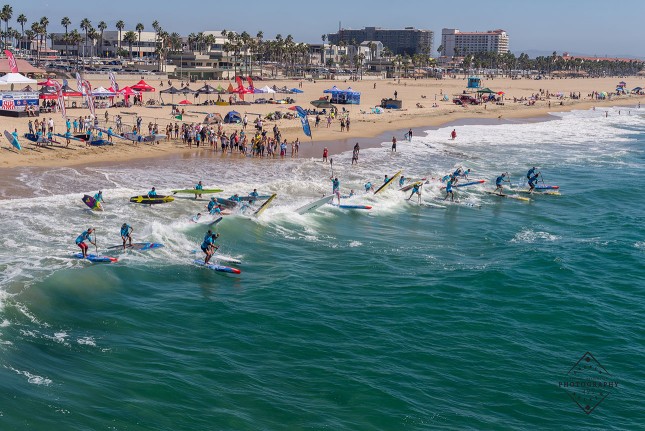
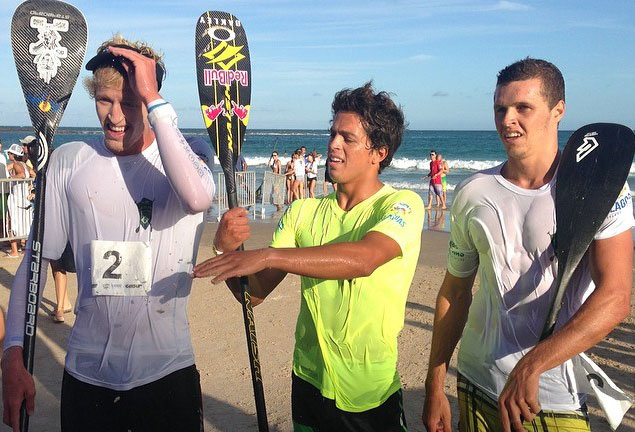
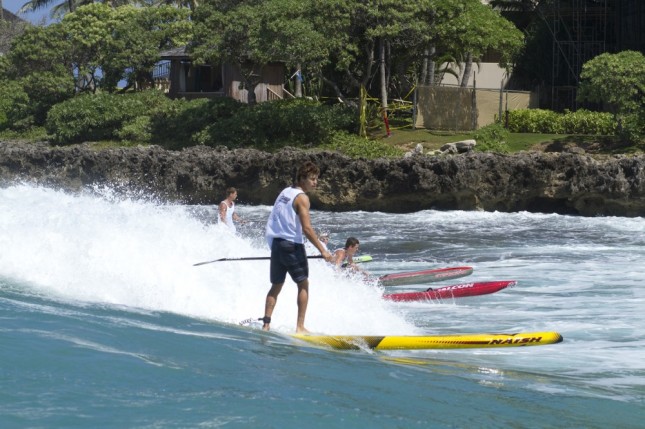
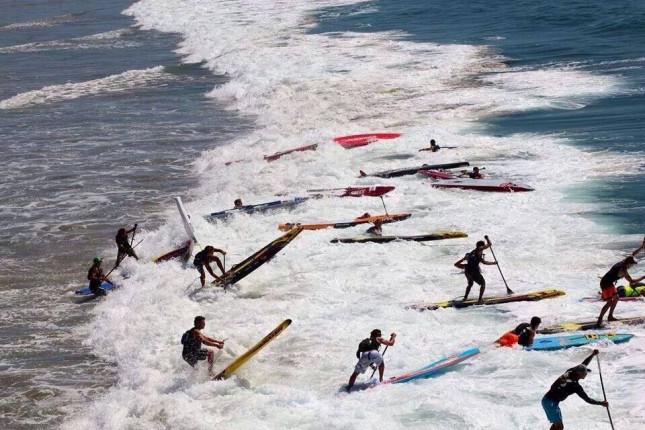
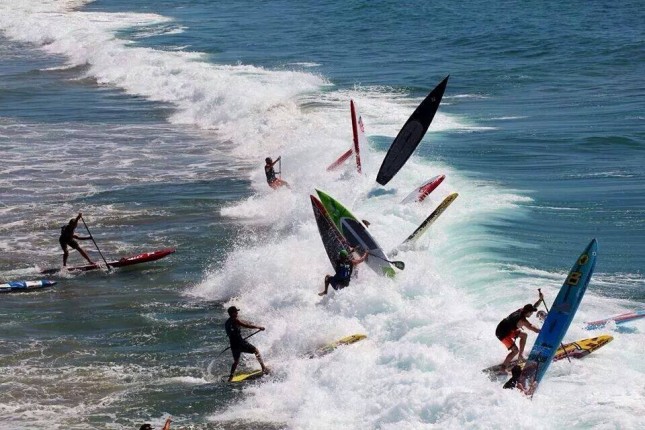
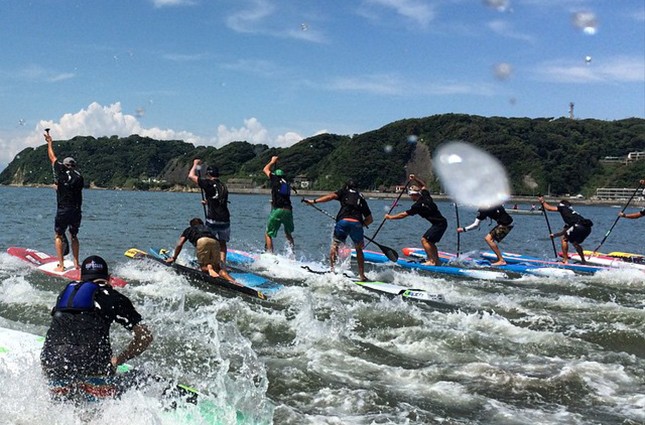
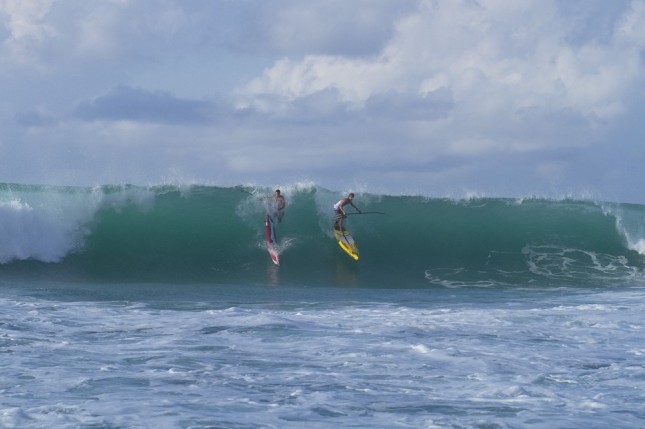
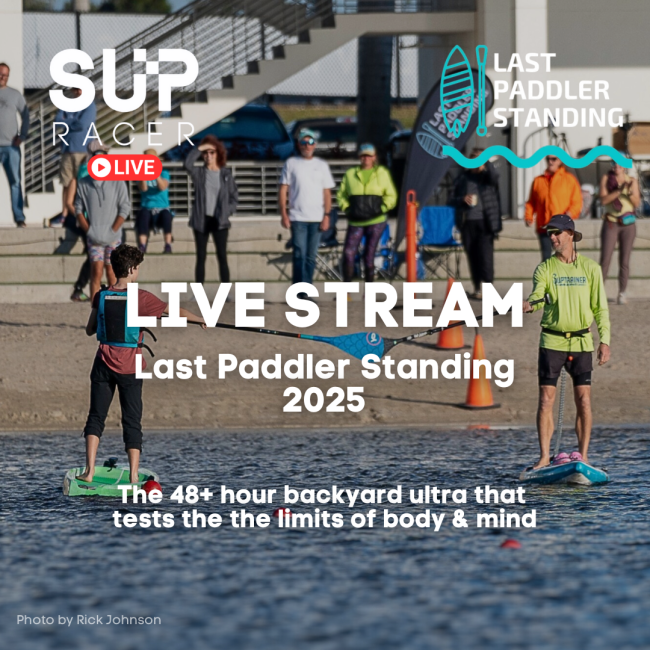
You must be logged in to post a comment.